This article originally appeared on VICE Australia.
This article accompanies our latest episode of Extremes, which is a VICE podcast exclusive to Spotify. In the show, we speak to a former member of the People's Temple who escaped Jonestown just hours before the massacre. You can listen to the show for free, right here
In 1978 David Netterville was a young combat controller stationed at Howard Air Force Base in Panama. On the morning of November 19, Netterville and seven others received a call from command telling them to pack a bag for at least 24 hours, with no information about where they were going or why. In later testimony, David would report being told to simply "get my butt in gear, pack my stuff, and get to the work section ASAP."
It was only later when airborne in a Hercules transport plane that he was told what was happening. A Californian congressman had been shot by a cult in the South American country of Guyana, and the team was being flown in to investigate. As David describes: “support was unknown and no further information was available. [We went in] totally blind, but willing.”
What Netterville found on arrival, of course, was nightmarish.
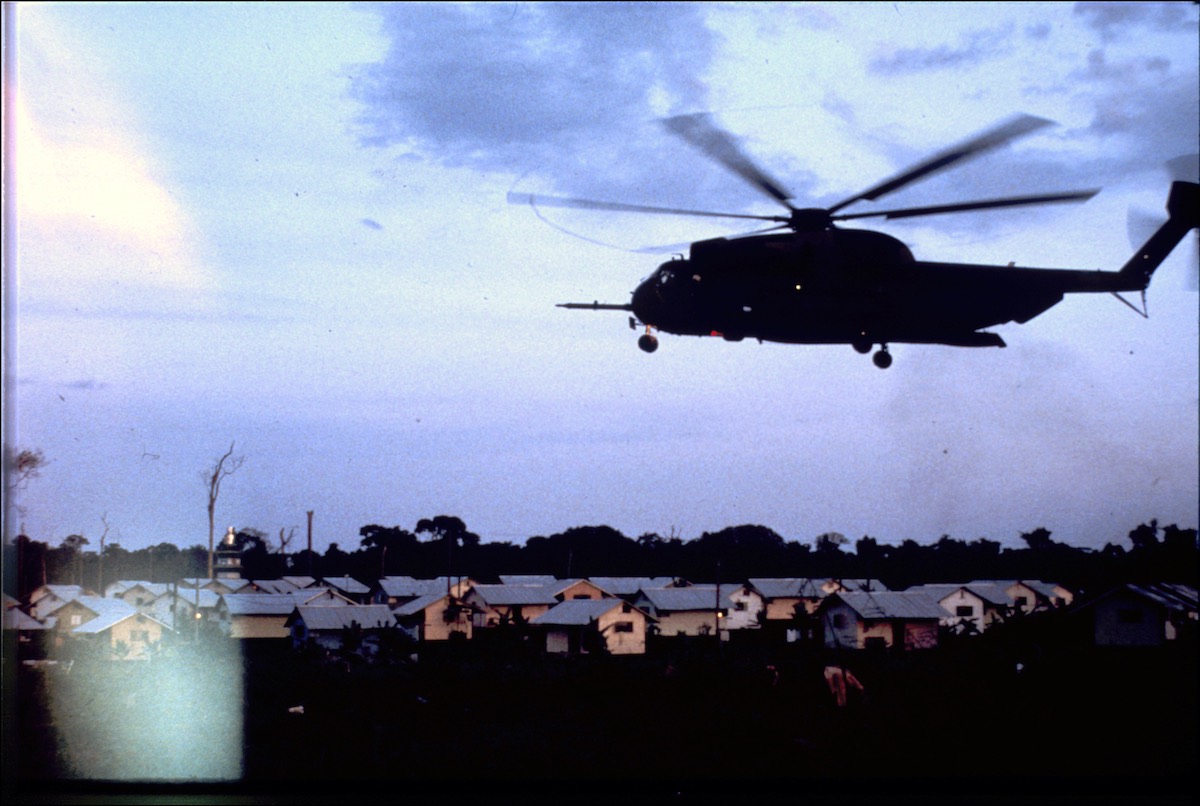
In an ultra-remote swath of Guyanese jungle, the recon team found a small village of flimsy, makeshift buildings. Among these buildings were hundreds upon hundreds of bloated, decomposing bodies, fanned out upon the grass.
“An initial count was made of approximately 400 bodies and no survivors,” he recalls. “But the count increased daily since many were stacked on top of each other… command staff kept upgrading the numbers from 400 to 500 to 700.”
For first responders like David Netterville, there was chillingly little information available about what Jonestown was or what had happened there. They faced only the enormity of the tragedy, and the task of somehow getting all these dead U.S. citizens back to the States.
For the full story, you can listen to the podcast by simply clicking "play" on the media player:
The name “Jonestown” has now been part of the public consciousness for 42 years. In those years, popular culture has scavenged the story for parts, giving us the band The Brian Jonestown Massacre and phrases like “drink the Kool-Aid.” But when you look at these photos, and see the faces of people processing a mass suicide, you feel its weight. You realize anew how disturbing the whole thing really was.
Like many cults, the People’s Temple had begun with a doctrine of equality that read well on paper. They practiced a combination of Pentecostal Christianity and communism that found an ardent following in late-60s California—but also like many cults, their teachings were undermined by their leader’s weakness for amphetamines and power. By the early 70s their leader, Jim Jones, faced several accusations of sexual assault, which likely prompted his decision to relocate the group from San Francisco to Guyana.
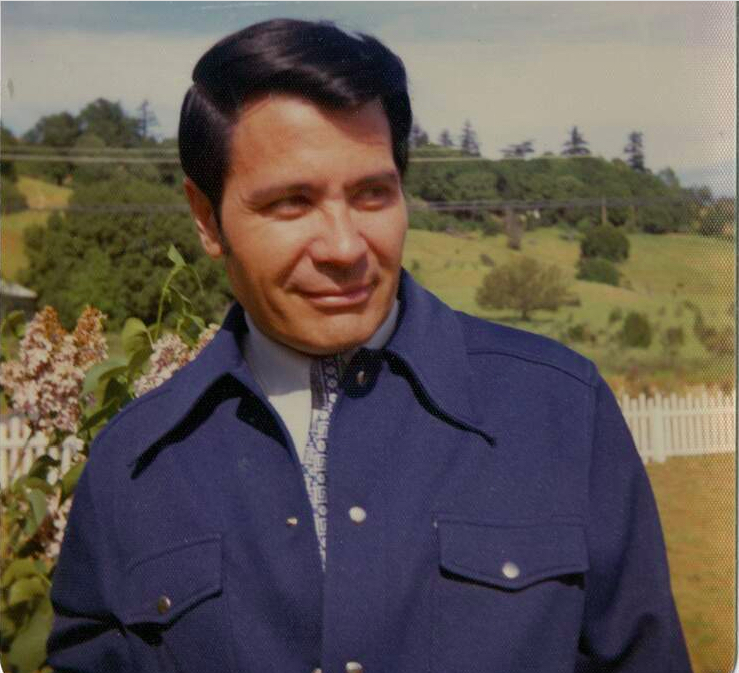
In the summer of 1977, some 900-odd people sold their possessions and followed Jones to the country's remote north, where they hacked a settlement out of the jungle and called it “Jonestown.” There, they found themselves under armed guard in a camp that was accessible only via plane or a 19-hour boat ride from the capital. It was always hot in Jonestown, and they were plagued by mosquitoes, water shortages, and endless speeches from Jim Jones, recorded and looped over the camp’s loudspeakers.
As 1977 slid into 1978, Jones became increasingly unhinged eventually introduced drills for mass-suicide. He told his congregation they were about to be raided by the FBI, and to avoid internment in concentration camps they had to lay down their lives.
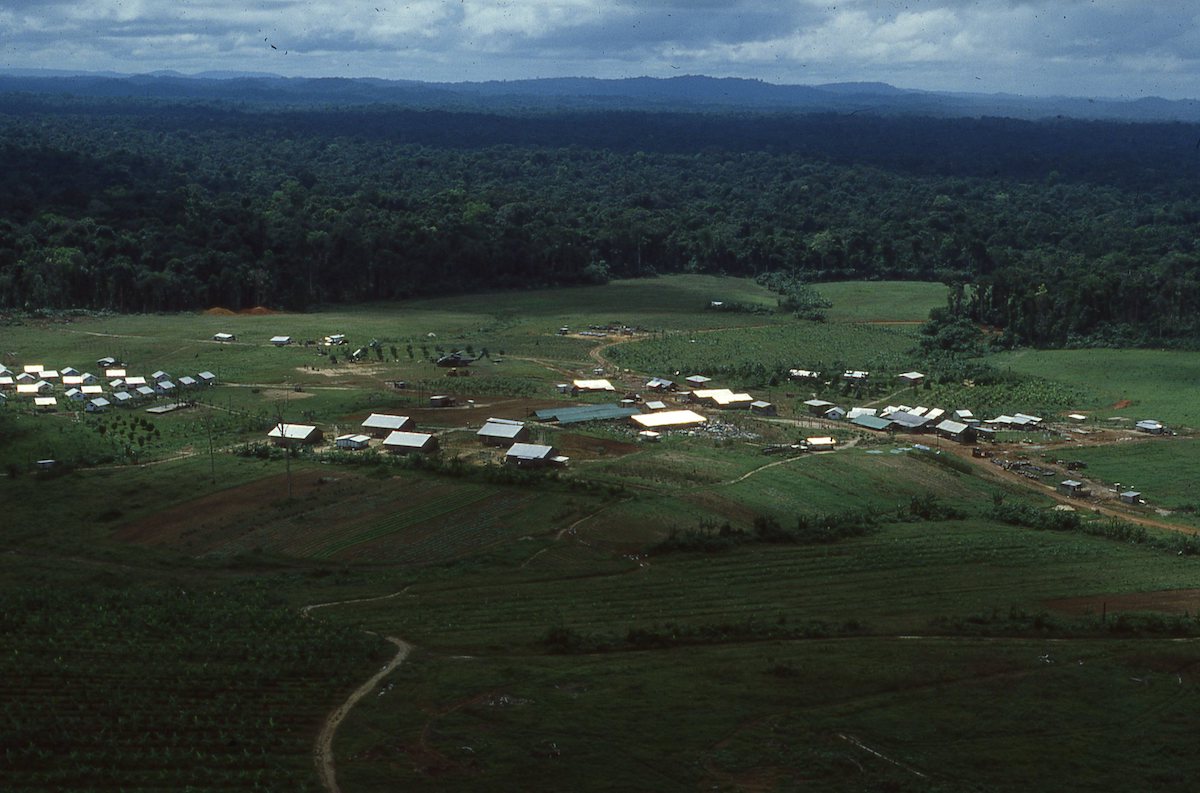
During one drill in October, Jones ordered the residents of Jamestown to drink a packet-mix fruit punch called Flavor-Aid (not Kool-Aid as the phrase suggests) and claimed the drink had been spiked with cyanide. The residents of Jonestown did as he told them and when nothing happened, Jones revealed that the exercise had been a hoax. But he had established the extent of his followers’ helpless obedience.
Just a few weeks later, on the afternoon of November 18, Jones again told everyone to drink a fruit punch, and 917 men, women, and children consumed a substance that really had been laced with cyanide. Jones was later found with a bullet wound in his head, bringing the final list of fatalities to 918.
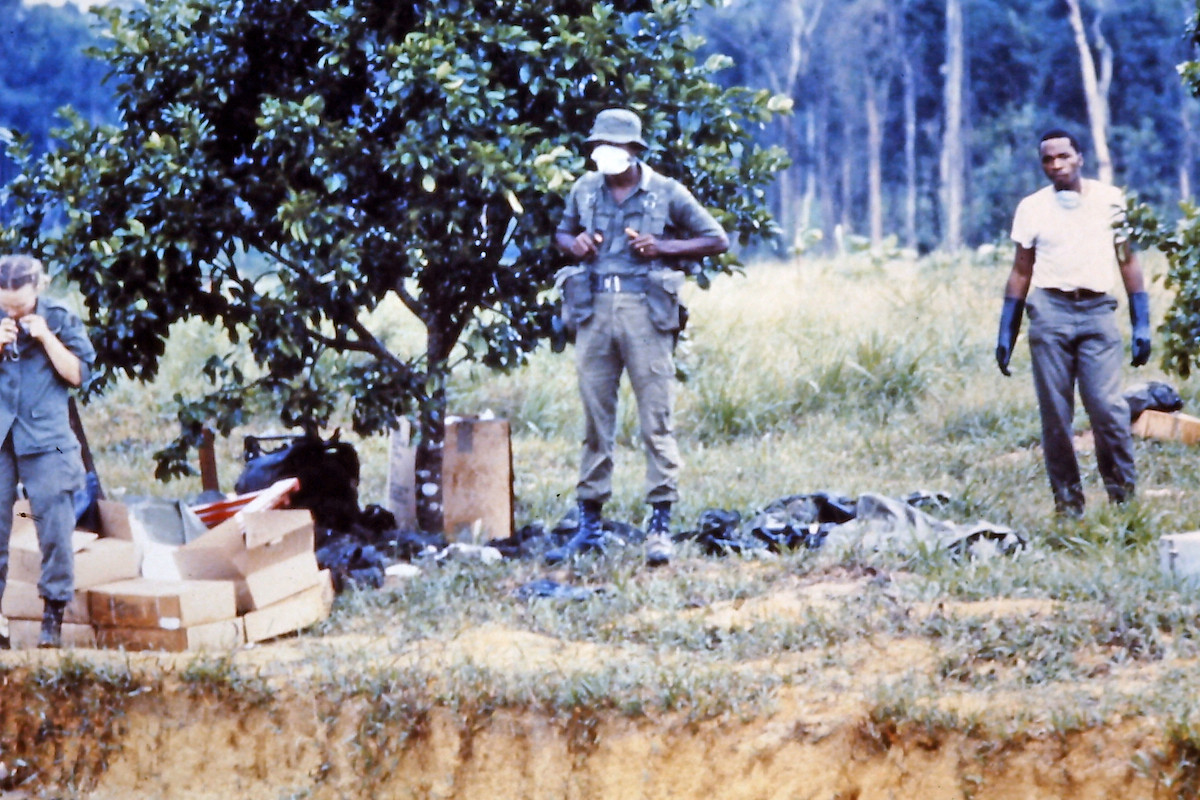
Many of these photos were later taken by a helicopter pilot with the U.S. Army named Clarence Cooper, who was one of the first American responders on the scene. He, along with an unknown number of medics, FBI investigators, and journalists, would spend three days chronicling what had happened and airlifting the bodies back to the States.
Naturally it was Guyanese locals who’d first discovered the massacre and alerted the police, who’d alerted the military, who’d taken the position that Jonestown was an American outpost strewn with American bodies and therefore an American problem. It wasn’t until November 20, two days after the massacre, that the first U.S. plane arrived to collect the dead.
At first, reports from the Guyanese military claimed that only around 400 people had died, which suggested that some 500 more were either hiding in the jungle or needing immediate medical attention. For this reason, the first U.S. crews were flown in expecting a rescue mission.
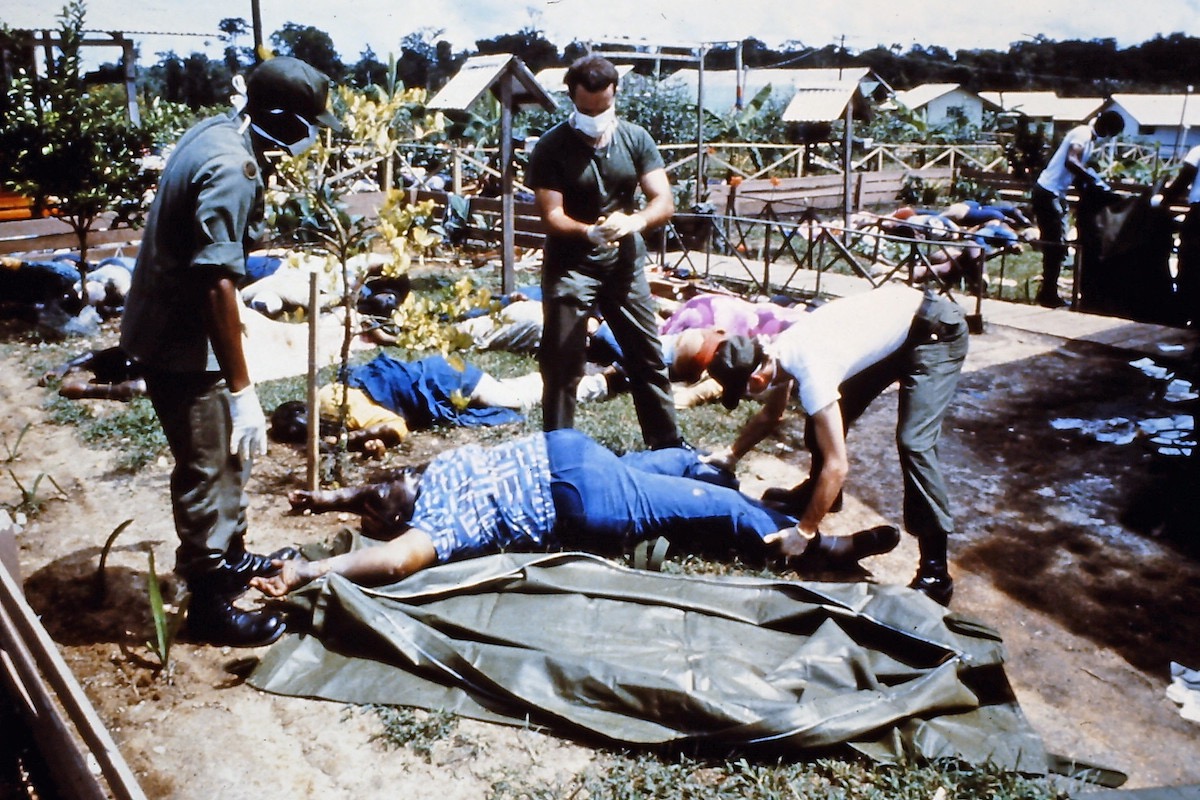
According to senior medic Jeff Brailey (who’d originally been sent to administer antidotes to survivors), the site was plagued by an eerie stillness that somehow managed to even repel scavengers.
“One can only speculate about the absence of buzzards or vultures,” wrote Brailey in his later book, The Ghosts of November. “Perhaps these birds realized that the men, women, and children of Jonestown died from the ingestion of a deadly poison… but their absence added to the surreal scene.”
Another first responder, Wayne Dalton, also described the stillness and silence of the town. “One of the things I found most disturbing about the whole thing was that everything was dead: The parrots hanging from their perches, the gorilla they had, dogs. All dead.”
Yet from all accounts—from the FBI investigators, to the military personnel coordinating body retrieval, to the journalists who later arrived to photograph the site—the most notable aspect of the area was the smell.
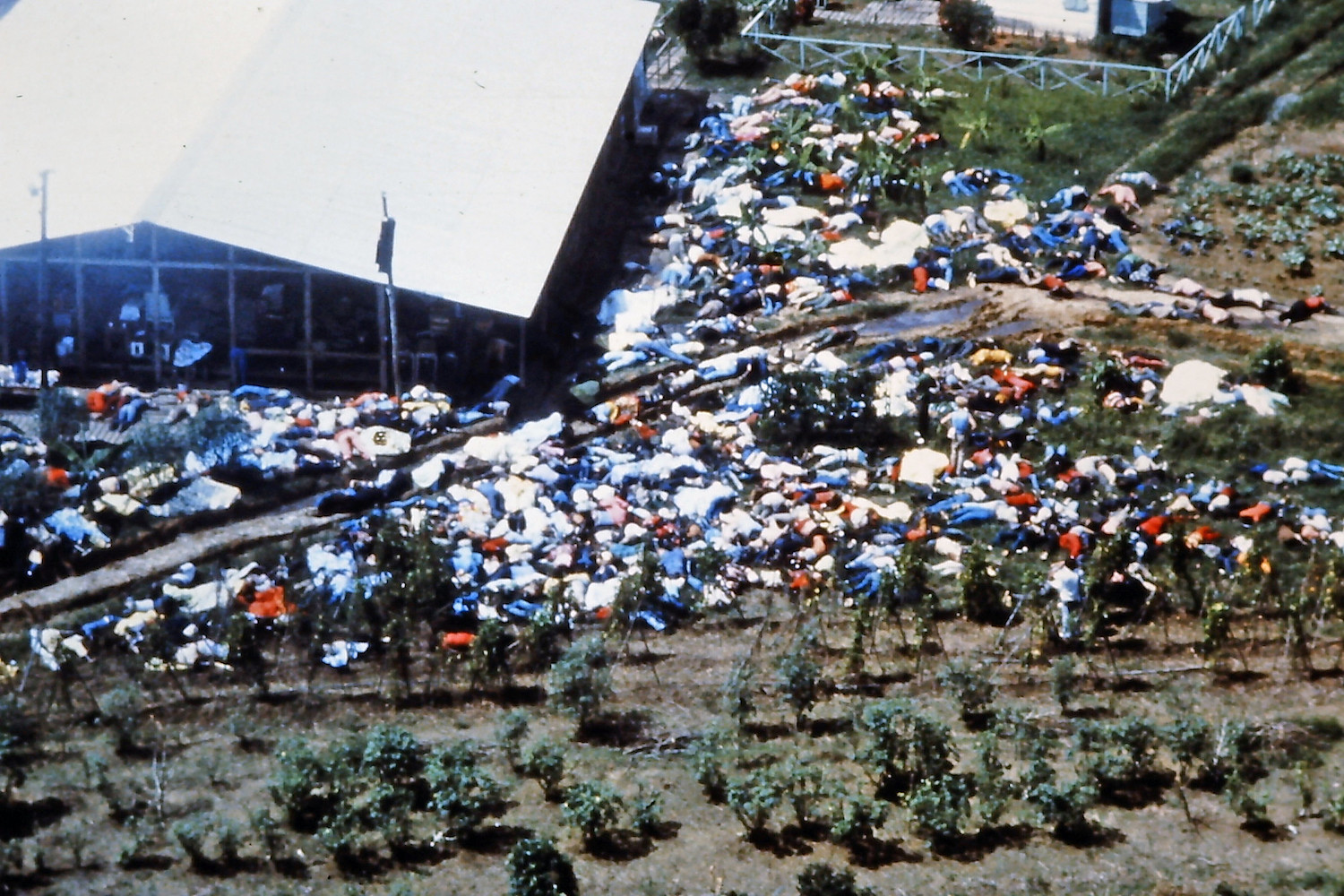
In Guyana’s tropical heat, the deceased had quickly swelled and filled with maggots. In just two days, many bodies were unable to be lifted into body bags, as they spit open under their own weight. For misinformed and often novice military recruits, this made transporting some 900 unrefrigerated bodies from Guyana to San Francisco a gruesome, traumatic ordeal.
“I watched as the last helicopter that left Jonestown touched down,” Jeff Brailey wrote, of the final airlift on November 23. “I remained an observer as extremely tired and thoroughly stressed out young American soldiers began removing the last remains. The repetitive robot-like movements of these men and women as they picked up body bags from the helicopter, walked to the tailgate of a nearby truck, and deposited their human cargo, was punctuated by their mask-like faces, completely devoid of any emotion. Their uniforms were soaked with body fluids and sweat, damaged beyond repair.”
Surprisingly, though, not all members of Jonestown were dead. Some had managed to escape, like 25-year-old Vernon Gosney, who’d got out just hours before the massacre. Like most of the world, he learned what happened at Jonestown via photos like these in newspapers. To him, the images also captured something dark beyond reason, even though he’d lived there and participated in the drills for mass suicide.
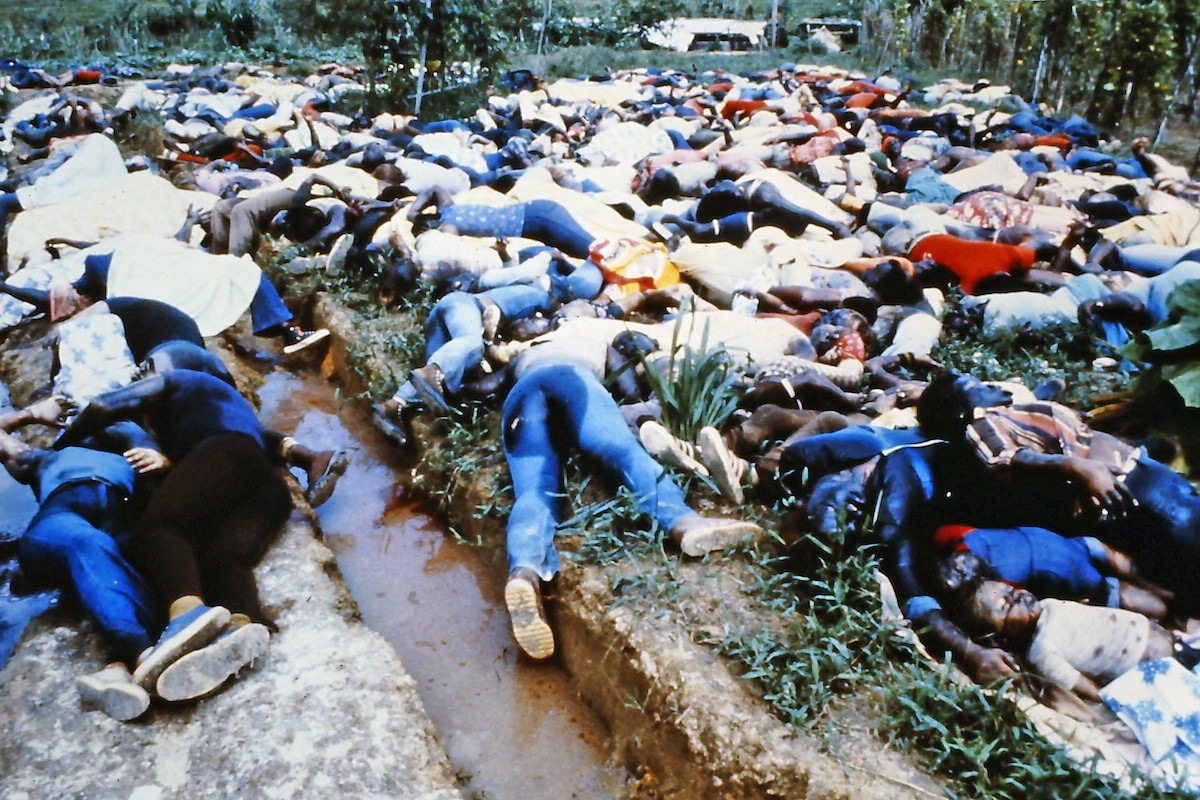
“A psychiatrist came into the hospital room and showed me a newspaper,” he told VICE, for our podcast Extremes. “I saw the photos, and it was a complete breakdown. I just couldn’t believe it.”
Today, we too can get a renewed sense of how learning about Jonestown felt to even someone like Vernon. This is the reality of Jonestown, which is the event we're referencing when we flippantly use the phrase “drink the Kool-Aid.” Looking at these images, you discover afresh what human beings are capable of doing for a half-baked idea or a deranged demigod. It's a tragic aspect of human nature that's easy to overlook—or, perhaps in this case, simply forget.
Click to hear Vernon Gosney describing his story of escape on the first episode of Extremes
Words by Julian Morgans.
from VICE https://ift.tt/2ySwwj8
via cheap web hosting
No comments:
Post a Comment